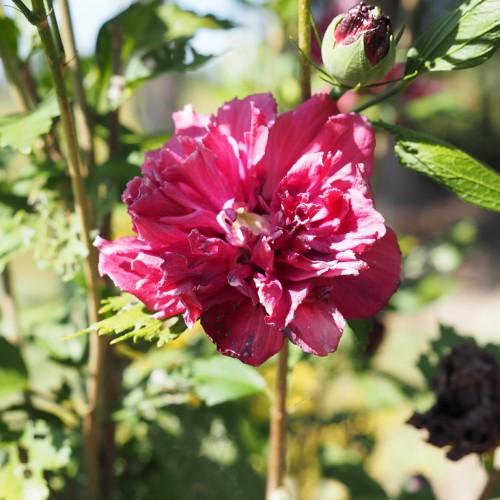
rose of Sharon
Hibiscus syriacus 'Lucy'
Cycle:
Perennial
Watering:
Average
Hardiness Zone:
5 - 8
Flowers:
Flowers
Sun:
Full sun,part shade
Leaf:
Yes
Growth Rate:
Moderate
Maintenance:
Low
Drought Tolerant:
Yes
Care Level:
Medium
watering
Rose of Sharon should be watered thoroughly 2 to 3 times each week during the active growing season, in spring and summer. In fall and winter months, when the plant is not actively growing, water it only once weekly. Check the soil prior to watering, as the plant should not be kept soggy or wet for extended periods of time. When water is no longer draining from the bottom of the pot, the soil is sufficiently moist and watering should cease. Over-watering can be just as harmful as under-watering, as it can lead to root rot and wilting of leaves.
sunlight
Rose of Sharon (Hibiscus syriacus 'Lucy') is an ideal shrub for sunny spots in the garden, as it prefers at least 6 to 8 hours of full sun each day. It thrives in a location that receives direct sunlight 25-40% of the day, meaning midday sun in summer and morning sun in winter. For optimal growth and flowering, it needs at least 1-half day of sunlight. It performs best when planted in a location that has full sun for at least 6-8 hours daily. Too little sunlight can lead to weak growth and fewer flowers. Additionally, Rose of Sharon prefers to be kept moist but not wet.
pruning
Rose of Sharon (Hibiscus syriacus 'Lucy') should be pruned in late winter (February or March) while the plant is still dormant. Prune by cutting back the main stems to about 4-6 inches above ground. This will encourage new growth and flowering. Additionally, prune any old or diseased branches, crossing branches, or branches that are growing at an odd angle. Prune selectively to maintain a shrub size that fits the space and shape that you desire. Make sure to sterilize your pruning tools with rubbing alcohol or a mixture of water and bleach to reduce the spread of disease.
